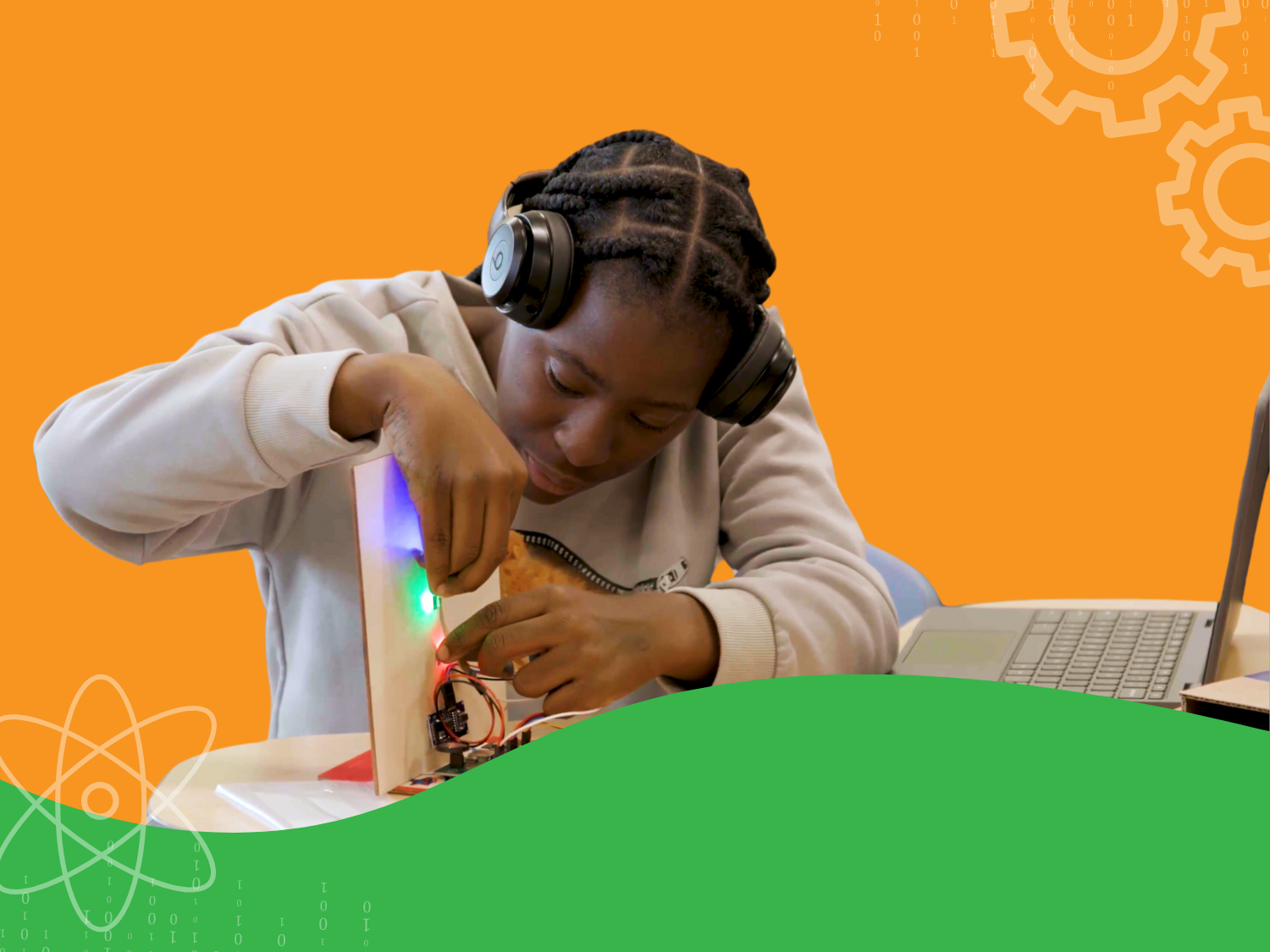STEAM and Project-based Learning (PBL) are a perfect match! In fact, PBL is at the heart of any strong STEAM (science, technology, engineering, arts, and math) curriculum. Through PBL, students dive deep into real-world challenges and problems, gaining a richer understanding of complex concepts while developing essential skills. This approach transforms classrooms into vibrant spaces where learning is hands-on, engaging, and deeply meaningful. In this article, we dive into simple STEAM Project-based Learning ideas you can start using in your classroom today!
The appeal of PBL in STEAM education is well supported by research. When it comes to student learning gains and long-term retention, PBL is a standout. Not only does it boost motivation and engagement, but it also equips students with 21st-century skills and fosters a strong sense of community. Let’s explore how you can make STEAM Project-Based Learning simple, effective, and enjoyable for your K-8 classroom!
Want to do a deep dive into STEAM Project-based Learning? Unlock the Power of STEAM Project-based learning with our on-demand STEAM webinar. Join us as we delve into the case for STEAM Project-based Learning (PBL). Learn about the transformative potential of PBL through real-world applications in the STEM classroom.

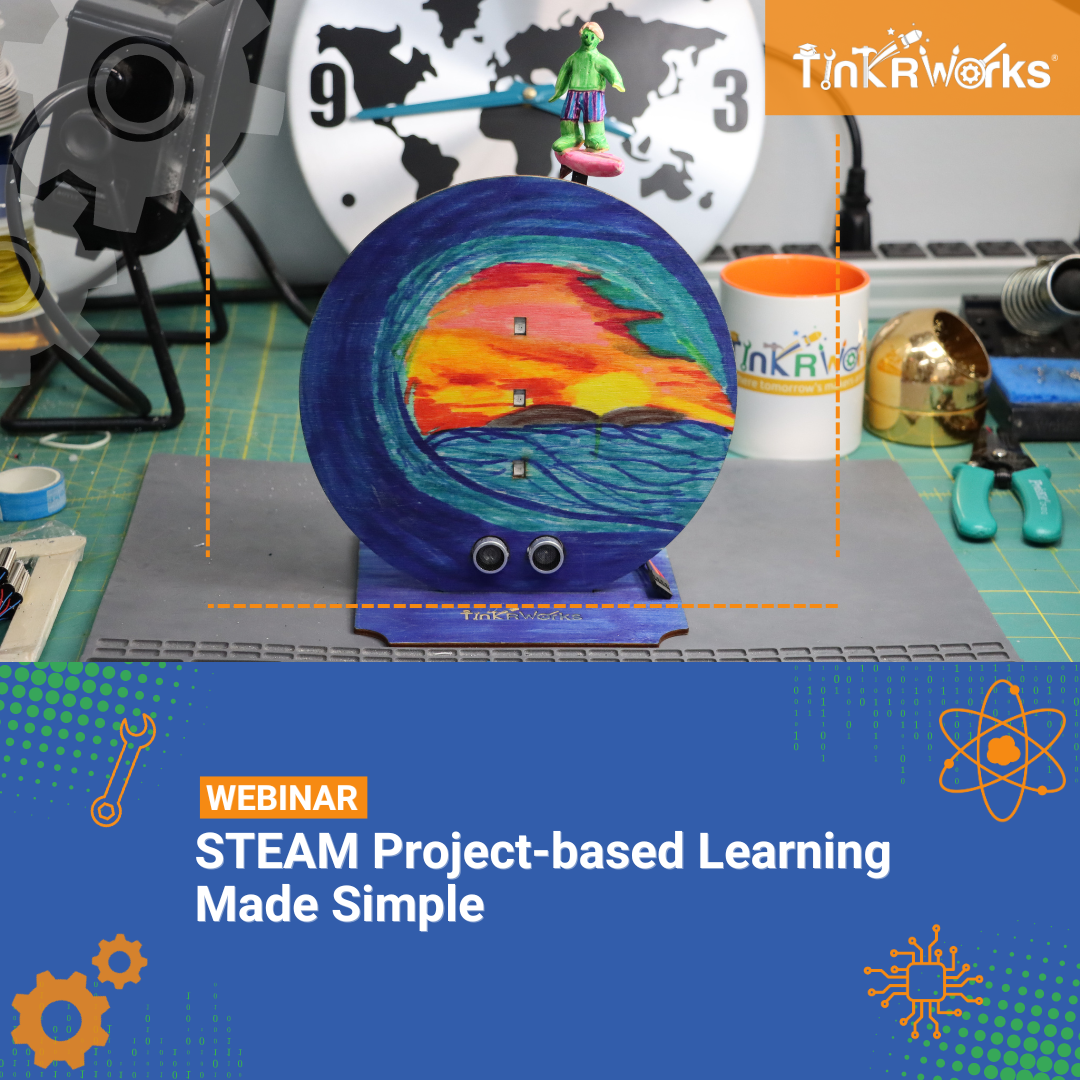 2. STEAM Project-based Learning Resource Kit
Explore the ultimate STEAM PBL Resource Kit for Grades K–8. This all-in-one kit includes everything you need: compelling insights that make the case for STEAM PBL, practical tip sheets, 17 innovative STEAM project ideas, and daily planners with reflection worksheets for students. It’s your ultimate guide to implementing PBL successfully and engaging your students in hands-on, meaningful learning experiences.
2. STEAM Project-based Learning Resource Kit
Explore the ultimate STEAM PBL Resource Kit for Grades K–8. This all-in-one kit includes everything you need: compelling insights that make the case for STEAM PBL, practical tip sheets, 17 innovative STEAM project ideas, and daily planners with reflection worksheets for students. It’s your ultimate guide to implementing PBL successfully and engaging your students in hands-on, meaningful learning experiences.
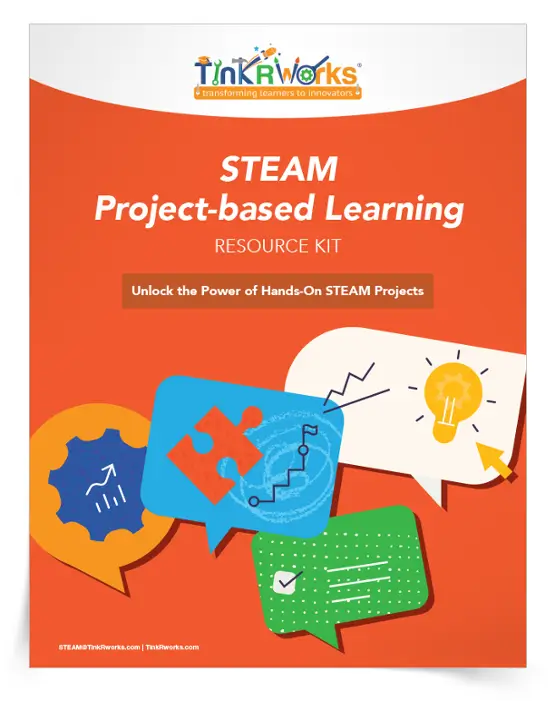 3. STEAM Project-based Learning Student Organizers
Support your students in developing essential reflection and problem-solving skills with our free STEAM PBL student organizers. These thoughtfully designed worksheets guide students through the PBL process, helping them document their progress, analyze their learning experiences, and refine their approaches. Perfect for grades 3–8, these organizers make project-based learning more accessible, structured, and impactful in your classroom
3. STEAM Project-based Learning Student Organizers
Support your students in developing essential reflection and problem-solving skills with our free STEAM PBL student organizers. These thoughtfully designed worksheets guide students through the PBL process, helping them document their progress, analyze their learning experiences, and refine their approaches. Perfect for grades 3–8, these organizers make project-based learning more accessible, structured, and impactful in your classroom
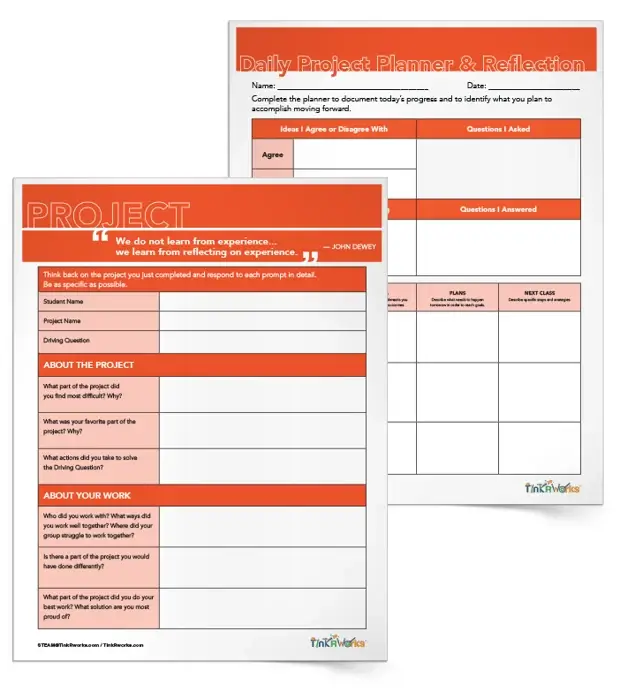
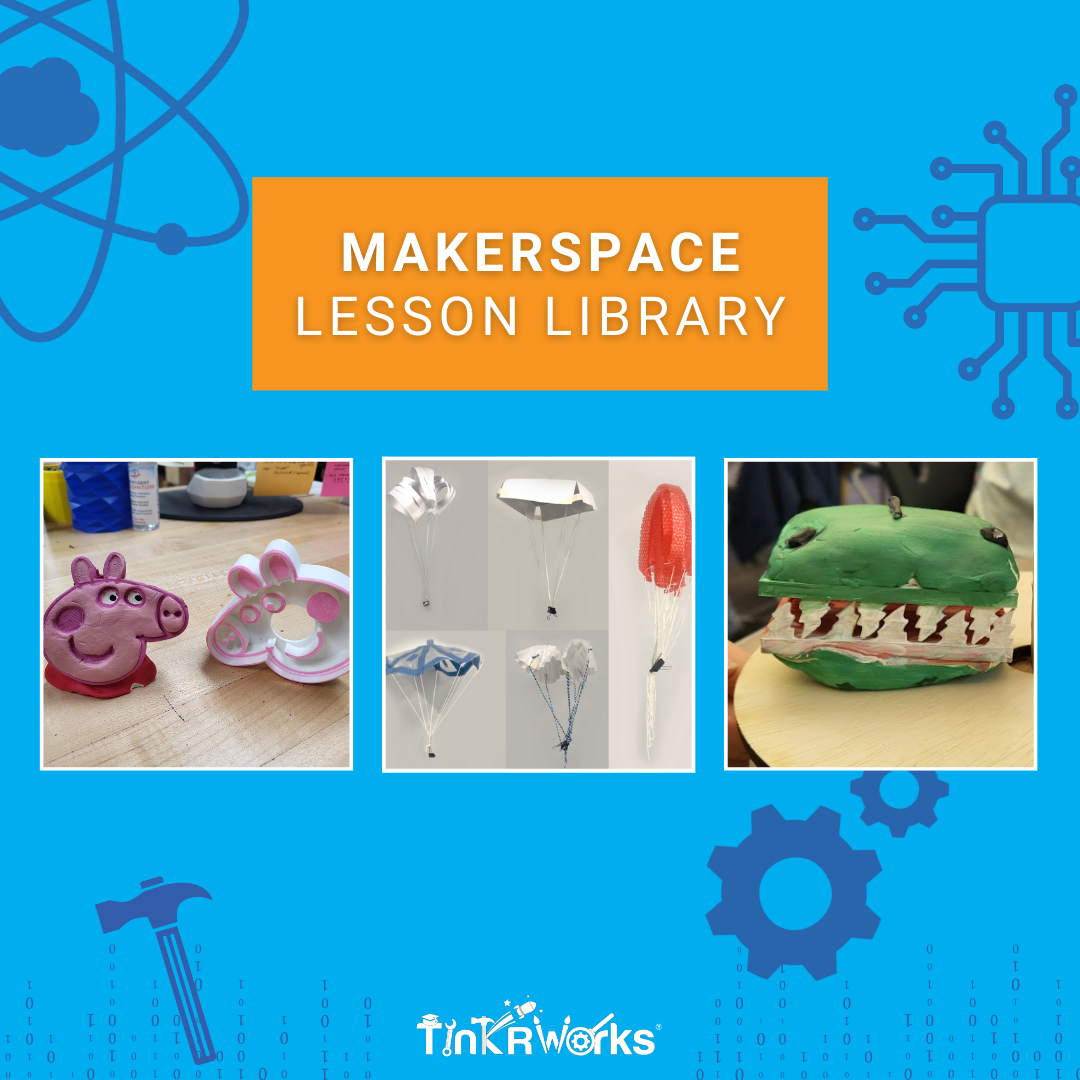 2. Spark Curiosity with Art Electric!
Art Electric combines art and electronics to create a truly unique STEAM experience. Students receive a collection of supplies—a canvas to decorate, electronics to integrate, and the freedom to let their imaginations run wild. They’ll learn about circuitry, programming, and the science behind their designs as they bring their projects to life. One of the most exciting aspects of Art Electric is that no two projects are the same; each student’s work reflects their personal creativity and understanding of the concepts. To see Art Electric in action, schedule a demo or preview our STEAM curriculum with the Art Electric Lesson Sampler.
2. Spark Curiosity with Art Electric!
Art Electric combines art and electronics to create a truly unique STEAM experience. Students receive a collection of supplies—a canvas to decorate, electronics to integrate, and the freedom to let their imaginations run wild. They’ll learn about circuitry, programming, and the science behind their designs as they bring their projects to life. One of the most exciting aspects of Art Electric is that no two projects are the same; each student’s work reflects their personal creativity and understanding of the concepts. To see Art Electric in action, schedule a demo or preview our STEAM curriculum with the Art Electric Lesson Sampler.
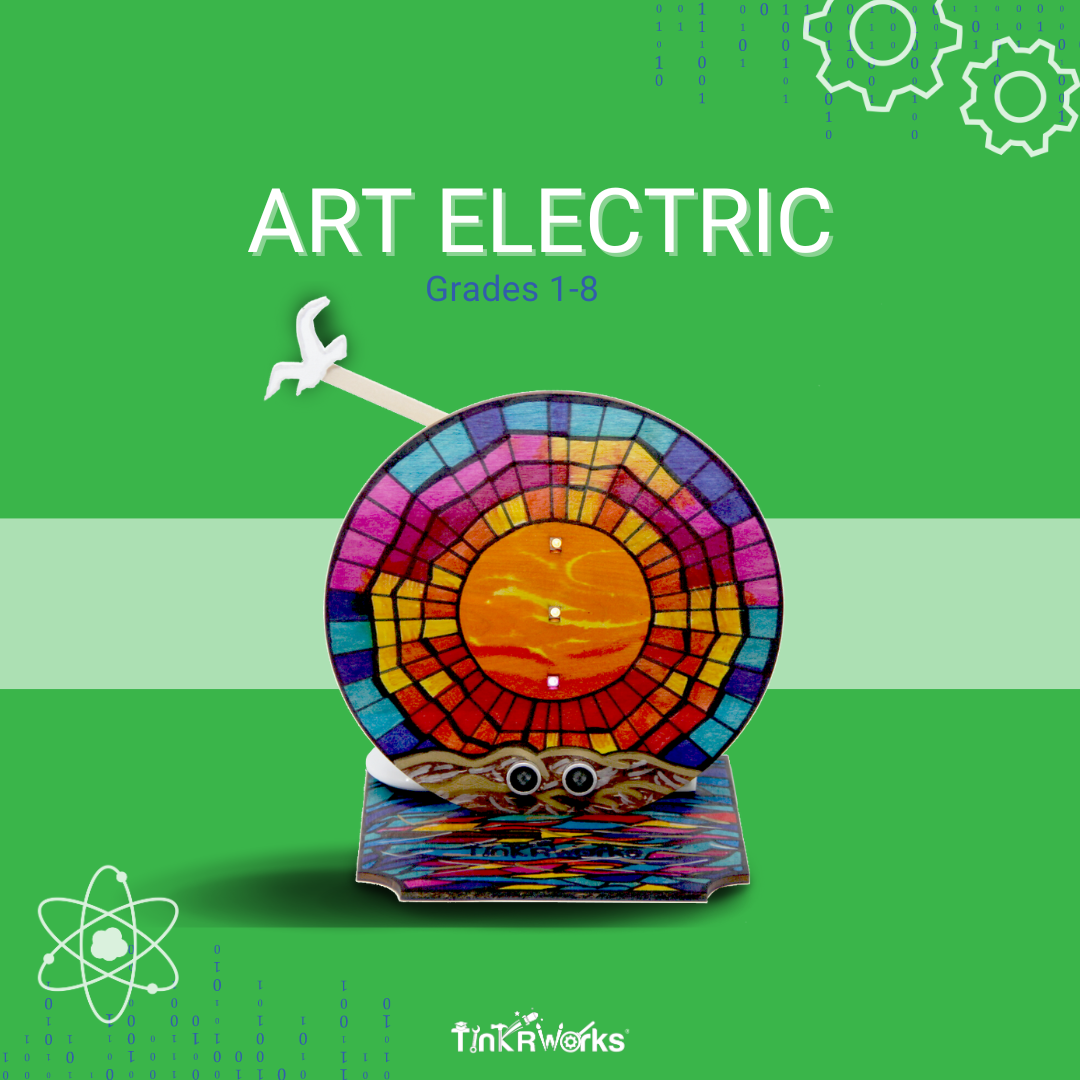 3. Discover Hands-on STEAM Kits for Grades K–8
TinkRworks’ hands-on STEAM kits go beyond “robot in a box” projects by offering students the chance to engage in the full engineering design process. As they assemble, wire, decorate, and code, students develop a deeper understanding of concepts across various subjects, including plant science, digital music, and robotics. These kits foster creativity, enhance problem-solving skills, and inspire self-expression, all while reinforcing core academic standards. Each kit includes everything you need for a ready-to-teach, grade-level appropriate lesson that aligns with your curriculum. Discover TinkRworks Hands-on STEAM Kits!
3. Discover Hands-on STEAM Kits for Grades K–8
TinkRworks’ hands-on STEAM kits go beyond “robot in a box” projects by offering students the chance to engage in the full engineering design process. As they assemble, wire, decorate, and code, students develop a deeper understanding of concepts across various subjects, including plant science, digital music, and robotics. These kits foster creativity, enhance problem-solving skills, and inspire self-expression, all while reinforcing core academic standards. Each kit includes everything you need for a ready-to-teach, grade-level appropriate lesson that aligns with your curriculum. Discover TinkRworks Hands-on STEAM Kits!



What is STEAM Project-Based Learning?
Project-based learning (PBL) is an active student-centered form of instruction characterized by students’ autonomy, constructive investigations, goal-setting, collaboration, communication, and reflection within real-world practices. Some advocates for PBL make it sound like a cure-all for what ails a dreary classroom. They suggest that PBL will inspire and motivate passive students, restore the joy of teaching, rebuild communities, help solve world problems, and dramatically raise test scores. Although PBL is not the answer to all the world’s problems, there is some truth behind these claims! The research demonstrates that PBL is a powerful teaching method and that motivated learners cannot be stopped! Here’s what makes PBL so impactful:- PBL motivates students in unprecedented ways
- PBL prepares students for college, work, and citizenship
- PBL helps educators to teach in a more satisfying way
- PBL provides schools and districts reasons to communicate and connect students, teachers, schools, and the local community
Research Supports STEAM Project-Based Learning
The research supporting STEAM Project-Based Learning is robust and continually growing. Studies consistently show that PBL has a strong positive effect on student achievement, particularly in science, and also positively impacts social and emotional development. When you implement high-quality PBL, you’re opening the door to a transformative journey where students move beyond rote memorization to active exploration and application of ideas. One compelling study involved over 2,300 elementary students from diverse backgrounds in Michigan. The study compared students in traditional science classrooms with those engaging in a language-rich, project-based STEAM curriculum. The findings were striking: students in PBL classrooms scored eight percentage points higher on science assessments compared to their peers in traditional classrooms. These gains were consistent across various reading levels, racial and ethnic backgrounds, and income levels, demonstrating that PBL is a powerful tool for equity in education. But the benefits of PBL extend beyond academic performance. The same study highlighted positive effects on two key aspects of social-emotional learning: reflection and collaboration. Students in PBL classrooms reported valuing reflection and collaboration significantly more than those in traditional settings. This makes sense—PBL encourages students to work together, share ideas, and learn from each other, which not only fosters a supportive classroom community but also builds essential skills like empathy, communication, and teamwork. In summary, PBL isn’t just for “science kids” in well-funded schools; it’s an inclusive, effective, and equitable approach that can benefit all students. The evidence is clear: PBL not only boosts academic achievement but also supports the development of critical life skills.STEAM Project-based Learning Resources to Get You Started
Bringing PBL into your STEAM curriculum can feel like a daunting task, but with the right resources, it’s easier than you might think. To help you seamlessly integrate Project-based Learning into your STEAM instruction, TinkRworks offers a variety of STEAM resources designed specifically for K-8 educators: 1. STEAM Webinar: STEAM Project-based Learning Made Simple Learn about the impact of PBL on K-8 STEAM education through our on-demand webinar, STEAM Project-based Learning Made Simple. In this brief webinar, we explore the powerful impact of PBL on student engagement, achievement, and skill development. Hear from experts who share real-world examples and insights on how to effectively integrate PBL into your STEM classroom. This is a must-watch for educators eager to make learning more meaningful and dynamic! Watch this STEAM webinar now. 2. STEAM Project-based Learning Resource Kit
Explore the ultimate STEAM PBL Resource Kit for Grades K–8. This all-in-one kit includes everything you need: compelling insights that make the case for STEAM PBL, practical tip sheets, 17 innovative STEAM project ideas, and daily planners with reflection worksheets for students. It’s your ultimate guide to implementing PBL successfully and engaging your students in hands-on, meaningful learning experiences.
2. STEAM Project-based Learning Resource Kit
Explore the ultimate STEAM PBL Resource Kit for Grades K–8. This all-in-one kit includes everything you need: compelling insights that make the case for STEAM PBL, practical tip sheets, 17 innovative STEAM project ideas, and daily planners with reflection worksheets for students. It’s your ultimate guide to implementing PBL successfully and engaging your students in hands-on, meaningful learning experiences.
 3. STEAM Project-based Learning Student Organizers
Support your students in developing essential reflection and problem-solving skills with our free STEAM PBL student organizers. These thoughtfully designed worksheets guide students through the PBL process, helping them document their progress, analyze their learning experiences, and refine their approaches. Perfect for grades 3–8, these organizers make project-based learning more accessible, structured, and impactful in your classroom
3. STEAM Project-based Learning Student Organizers
Support your students in developing essential reflection and problem-solving skills with our free STEAM PBL student organizers. These thoughtfully designed worksheets guide students through the PBL process, helping them document their progress, analyze their learning experiences, and refine their approaches. Perfect for grades 3–8, these organizers make project-based learning more accessible, structured, and impactful in your classroom

STEAM Project-Based Learning Ideas for Elementary and Middle School
STEAM projects offer a perfect entry point into project-based learning. They provide a tangible, interactive way for students to apply their knowledge in meaningful contexts, making abstract concepts come alive. From crafting simple models to designing intricate systems, these projects cater to diverse learning styles and interests, empowering students to take ownership of their learning journey. By immersing students in STEAM PBL, you can cultivate a classroom environment that prioritizes innovation, curiosity, and hands-on exploration. Here are some practical ways to bring this approach into your classroom: 1. Explore TinkRworks’ Makerspace Library, TinkRpedia TinkRpedia is a comprehensive makerspace library that offers K-8 educators a variety of STEAM PBL project ideas designed to engage students in hands-on learning. Each lesson includes clear learning objectives, step-by-step procedures, and additional challenges for eager learners. From simple projects using recycled materials for beginner makerspaces to more advanced options that incorporate 3D design and printing, TinkRpedia caters to a range of skill levels and interests. This resource is perfect for educators who want to bring STEAM PBL to life in their classrooms with minimal hassle and maximum impact. Access TinkRpedia’s STEAM Makerspace Lesson Library now! 2. Spark Curiosity with Art Electric!
Art Electric combines art and electronics to create a truly unique STEAM experience. Students receive a collection of supplies—a canvas to decorate, electronics to integrate, and the freedom to let their imaginations run wild. They’ll learn about circuitry, programming, and the science behind their designs as they bring their projects to life. One of the most exciting aspects of Art Electric is that no two projects are the same; each student’s work reflects their personal creativity and understanding of the concepts. To see Art Electric in action, schedule a demo or preview our STEAM curriculum with the Art Electric Lesson Sampler.
2. Spark Curiosity with Art Electric!
Art Electric combines art and electronics to create a truly unique STEAM experience. Students receive a collection of supplies—a canvas to decorate, electronics to integrate, and the freedom to let their imaginations run wild. They’ll learn about circuitry, programming, and the science behind their designs as they bring their projects to life. One of the most exciting aspects of Art Electric is that no two projects are the same; each student’s work reflects their personal creativity and understanding of the concepts. To see Art Electric in action, schedule a demo or preview our STEAM curriculum with the Art Electric Lesson Sampler.
 3. Discover Hands-on STEAM Kits for Grades K–8
TinkRworks’ hands-on STEAM kits go beyond “robot in a box” projects by offering students the chance to engage in the full engineering design process. As they assemble, wire, decorate, and code, students develop a deeper understanding of concepts across various subjects, including plant science, digital music, and robotics. These kits foster creativity, enhance problem-solving skills, and inspire self-expression, all while reinforcing core academic standards. Each kit includes everything you need for a ready-to-teach, grade-level appropriate lesson that aligns with your curriculum. Discover TinkRworks Hands-on STEAM Kits!
3. Discover Hands-on STEAM Kits for Grades K–8
TinkRworks’ hands-on STEAM kits go beyond “robot in a box” projects by offering students the chance to engage in the full engineering design process. As they assemble, wire, decorate, and code, students develop a deeper understanding of concepts across various subjects, including plant science, digital music, and robotics. These kits foster creativity, enhance problem-solving skills, and inspire self-expression, all while reinforcing core academic standards. Each kit includes everything you need for a ready-to-teach, grade-level appropriate lesson that aligns with your curriculum. Discover TinkRworks Hands-on STEAM Kits!

In Conclusion
STEAM Project-Based Learning is more than just a teaching strategy—it’s a way to transform education into a dynamic, student-centered experience that fosters curiosity, creativity, and a love of learning. By integrating PBL into your STEAM instruction, you’re not only enhancing academic outcomes but also equipping students with the skills they need to thrive in the 21st century. Whether you’re new to PBL or looking to deepen your practice, TinkRworks offers a range of resources to help you get started. From our makerspace library and hands-on STEAM kits to innovative projects like Art Electric, we’re here to make STEAM learning simple, accessible, and fun for all your students. Explore our resources today, and bring the power of STEAM PBL to your classroom!

